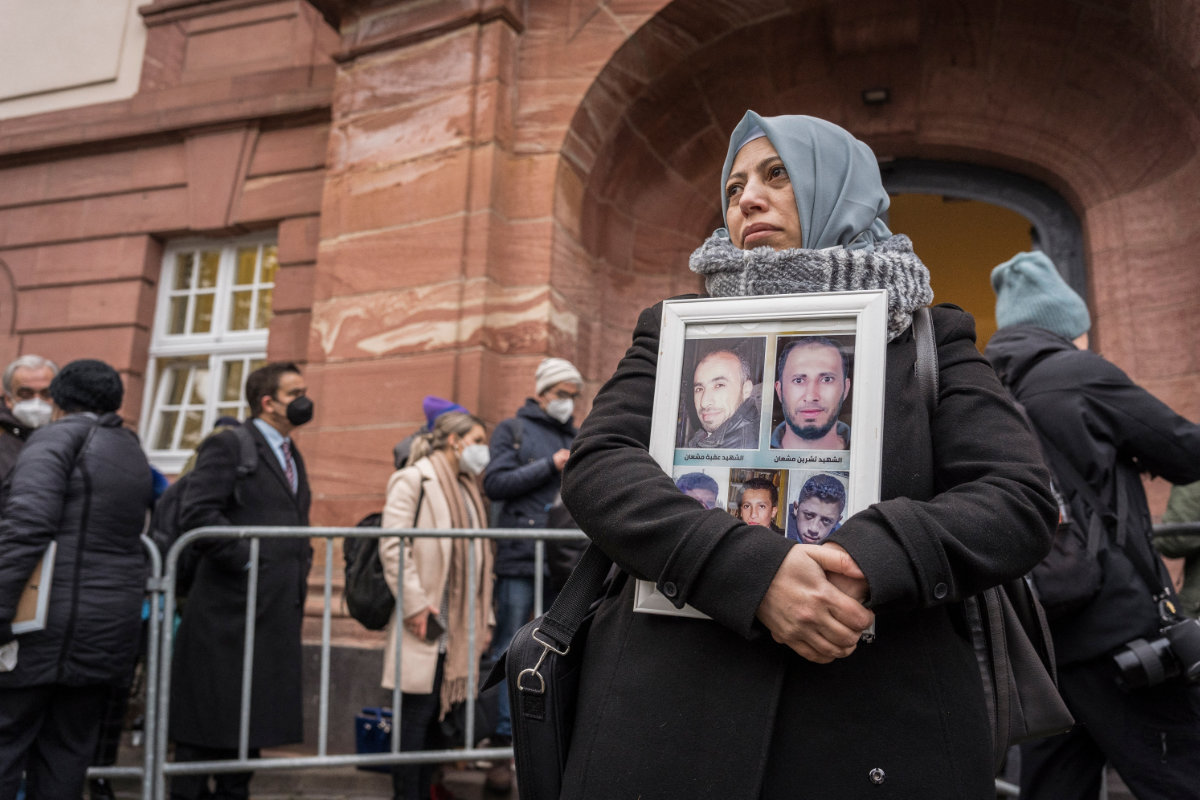Forty-one civilians in all were murdered in the single coldblooded incident in 2013. One by one, the blindfolded detainees were brought to the edge of a freshly dug pit in the Damascus suburb of Tadamon and systematically shot. The bodies, piled one on top of the other, were later set on fire.
Footage of the massacre, carried out by Syrian militia members loyal to Bashar Assad’s regime, emerged only in April this year following an expose by the UK’s Guardian newspaper and the online New Lines Magazine.
The amateur video, taken by the killers themselves, was discovered by a militia recruit in the laptop of one of his seniors. Sickened by what he had seen, the rookie passed the video on to researchers, who later confronted one of the killers identified in the footage.
Journalists and activists from southern Damascus, speaking to Arab News following online circulation of the video, said that the Tadamon massacre was unlikely to have been the only atrocity committed in the area during that period.
Throughout 2012 and 2013, pro-regime militias would shoot random passers-by at checkpoints in Tadamon, Yalda and the Yarmouk camp, and also gun down people in their homes. Bodies of the victims were often left to rot, according to local residents.
“We would hear about these massacres and the burning of corpses,” Rami Al-Sayed, a photographer from the Tadamon neighborhood, told Arab News. “We knew that anyone arrested by the shabiha of Nisreen Street would be disappeared and, in most cases, executed.”
Shabiha is a Syrian term for militias sponsored by the Assad government that carried out extrajudicial killings during the civil war that broke out in the wake of the 2011 uprising.
Nisreen Street was notorious as a stronghold of one such militia, which at the start of the uprising violently repressed protests, and later began detaining and executing residents of southern Damascus.
“All the victims identified so far are not known to have participated in protests or military activity against the regime,” Al-Sayed said.
“In fact, the presence of a strong pro-regime contingent in Tadamon forced most people opposed to the regime to flee the neighborhood entirely, or to reside in an area that was still under the control of the opposition in 2013.”
Syrian human rights monitors say entire families that attempted to cross checkpoints in southern Damascus went missing in 2013, including children and the elderly. In many cases, their fate remains unknown even today.
These families constitute a small fraction of the 102,000 civilians who have vanished since the uprising began in 2011, according to the Syrian Network for Human Rights, which believes regime forces are responsible for the forced disappearance of almost 85 percent of the total number of missing Syrians.
Most of the victims of the Tadamon massacre are yet to be publicly identified since their families, fearing further reprisals, are reluctant to come forward and acknowledge their relationship.
“Many of the relatives are afraid to announce that they recognized their loved one in the video because they are afraid of persecution by the Syrian secret police, especially if they live in regime-held areas,” Mahmoud Zaghmout, a Syrian-Palestinian from Yarmouk camp, told Arab News.
Residents of southern Damascus expect neither the perpetrators of this specific massacre nor those responsible for overseeing countless others to be held to account any time soon, despite the incriminating video evidence.
“This is not the first time such clear evidence of the involvement of Syrian regime personnel in crimes of genocide has been exposed,” said Zaghmout. “But the regime remains protected by the Russians, enabling it to avoid any accountability.”
When footage of the massacre first emerged online, the families of Syrians and Palestinians who had disappeared in 2013 frantically scanned the video for clues to the whereabouts of their loved ones.
Even if the horrific images confirmed their worst fears, at least they might find some semblance of closure that would end the uncertainty concerning their loss and allow them to mourn properly.
Families endured the same trauma while trawling through thousands of photographs smuggled out of Syria by a military defector code-named Caesar in 2013. The images contained horrifying evidence of rape, torture and extrajudicial executions inside regime jails.
Evidence provided by Caesar was used to help prosecute Anwar Raslan, a former Syrian intelligence officer, who in January was sentenced to life in prison by a court in Germany for the horrific abuses he inflicted on detainees.

